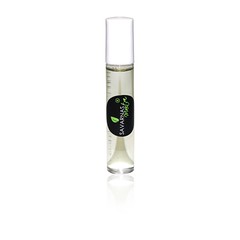
- Find Out More About:
- Circumcision In Australia
Alopecia – Definition, Causes, Symptoms and Treatment
by
Juliet CohenAlopecia simply means hair loss (baldness). Alopecia areata is a form of hair loss from areas of the body, usually from the scalp. Alopecia areata affects both males and females. Alopecia areata does not make you feel pain and does not make you feel sick. In 12% of cases, the condition can spread to the entire scalp (Alopecia totalis) or to the entire epidermis (Alopecia universalis). Some people may lose more hair. Rarely, the disease causes total loss of hair on the head or complete loss of hair on the head, face, and body. Alopecia areata usually starts with one or more small, round, smooth bald patches on the scalp and can progress to total scalp hair loss (alopecia totalis) or complete body hair loss (alopecia universalis). Alopecia areata is an autoimmune disease. Normally the immune system protects the body against infection and disease. In an autoimmune disease, the body’s immune system mistakenly attacks some part of your own body. In alopecia areata, the immune system attacks the hair follicles. On rare occasions, the person loses all of the hair on his or her head (alopecia areata totalis) or entire body (alopecia areata universalis). Alopecia is the medical term for baldness; there are various types of alopecia, including alopecia areata.Alopecia areata tends to occur most often in children and young adults. However, it can also affect older individuals. Alopecia can certainly be the cause of psychological stress. There are several different hypotheses as to what causes alopecia areata. Genetic factors seem to play an important role since there is a higher frequency of a family. Trichotillomania is the name of a mental disorder that causes a person to pull out his/her own hair. Alopecia areata often occurs in families whose members have had asthma, hay fever, atopic eczema, or other autoimmune diseases such as thyroid disease, early-onset diabetes, rheumatoid arthritis, lupus erythematosus, vitiligo, pernicious anemia, or Addison’s disease. Systemic diseases often affect hair growth either selectively or by altering the skin of the scalp. Hyperthyroidism (too much thyroid hormone) causes hair to become thin and fine. Hypothyroidism (too little thyroid hormone) thickens both hair and skin. Androgenetic alopecia in men has been associated with several other medical conditions including coronary heart disease and enlargement of the prostate, a walnut-sized gland in males that is located below the bladder. In women, androgenetic alopecia is associated with an increased risk of polycystic ovary syndrome (PCOS). PCOS is characterized by a hormonal imbalance that can lead to irregular menstruation, acne, excess body hair (hirsutism), and weight gain.There are several available treatments for Alopecia. Two relatively new drugsminoxidil (Rogaine) and finasteride (Proscar)promote hair growth in a significant minority of patents. UVB is generally used to treat skin conditions but is also used for people with severe hair loss.Steroid injections are commonly used in sites where there are small areas of hair loss on the head or especially where eyebrow hair has been lost. Anti-inflammatory drugs that are prescribed for autoimmune diseases. Corticosteroids can be given as an injection into the scalp or other areas, orally (as a pill), or applied topically (rubbed into the skin) as an ointment, cream, or foam. Hair transplantation is completed by taking tiny plugs of skin, each containing one to several hairs, from the back side of the scalp. Another surgical procedure used to treat androgenic alopecia is scalp reduction. Cortisone pills are sometimes given for extensive scalp hair loss. Cortisone taken internally is much stronger than local injections of cortisone into the skin. It is necessary to discuss possible side effects of cortisone pills with your physician. , there are various cosmetic and protective techniques that people with alopecia areata can try. Include is Using makeup to hide or minimize hair loss. Wearing sunglasses to protect the eyes from the sun and the environment. Wearing coverings (wigs, hats, or scarves) to protect the head from the elements
Juliet Cohen writes articles for
health care clinic
and
home remedies
. She also writes articles on
beauty tips
.
Article Source:
eArticlesOnline.com